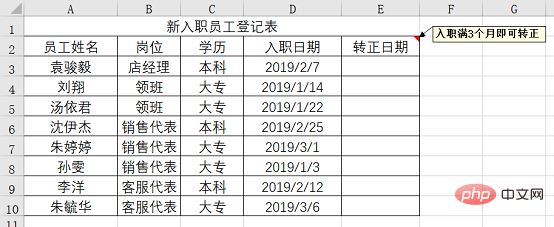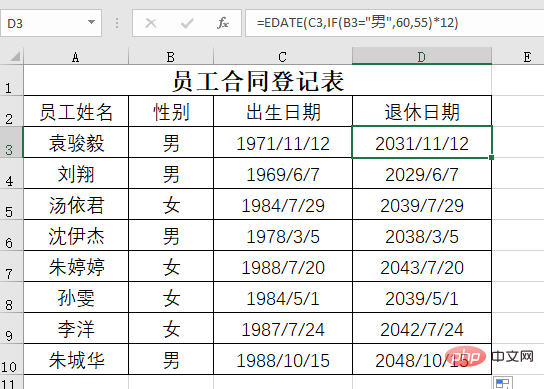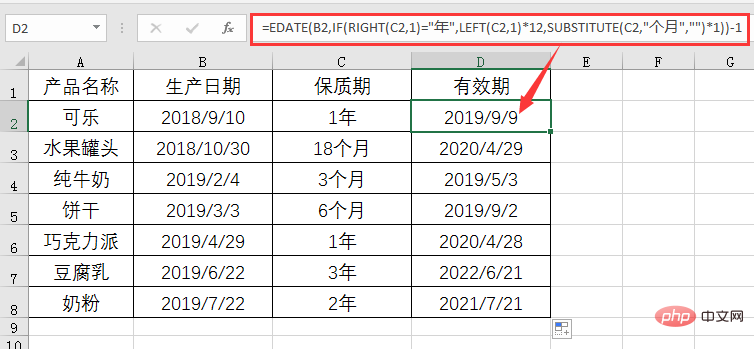Usually we always need to calculate various expiration times, such as contract expiration date, employee regularization date, product validity period, etc. The common practice is to use the DATE function to calculate, but the calculation formula of the DATE function is too cumbersome. Is there a simpler formula? Of course there is! Just use EDATE~

In daily work, we often encounter calculations such as the employee's regularization date, contract expiration date, employee retirement date, product validity expiration date, etc. Issues related to dates. These problems may seem complicated, but in fact they only require a very simple function, which is EDATE. Today I will share several application examples of the EDATE function. I hope it will be helpful to everyone.
Example 1: Calculate the employee's regularization date
The picture below is a registration form for new employees of a company. They can become regular employees after three months of employment. It must be calculated based on the entry date. Date of formalization.

No comparison means no harm. Let’s first take a look at how friends who don’t know the EDATE function write the formula:
=DATE(YEAR (D3),MONTH(D3) 3,DAY(D3))

The formula for using the EDATE function is like this: =EDATE(D3,3 ),Is not it simple?
The EDATE function requires only two parameters, the start date and the number of months between.
Formula=EDATE(D3,3) means the date corresponding to the date in cell D3 three months later.
Example 2: Calculate the contract expiration date
As shown in the figure, the corresponding contract expiration date needs to be calculated based on the date and contract period when each person signed the contract. Today, it is also very easy to calculate the result using the EDATE function.
Formula: =EDATE(D3,E3*12)-1

Different from the first example, this In the example, the date to be calculated is not the date 3 months later, but the date several years later. Because EDATE can only be calculated by month, you need to multiply the corresponding year in column E by 12 to turn it into the number of months to get the correct result.
Example 3: Calculate employee retirement date
As shown in the figure, the retirement date is calculated based on gender and date of birth. Males are over 60 years old and women are over 55 years old. retire.
Formula: =EDATE(C3,IF(B3="Male",60,55)*12)

Example 4: Calculate the expiration date of the product validity period
As shown in the figure, the product validity period is calculated based on the production date and shelf life of each product. Formula:=EDATE(B2,IF(RIGHT(C2,1)="Year",LEFT(C2,1)*12,SUBSTITUTE(C2,"Month","") *1))-1

The last point to note is that the number of months can be a negative number, which means that the date is found several months before the specified date.
Related learning recommendations: excel tutorial
The above is the detailed content of Excel function learning: due date calculation, several application examples of EDATE() function. For more information, please follow other related articles on the PHP Chinese website!
 Compare the similarities and differences between two columns of data in excel
Compare the similarities and differences between two columns of data in excel
 excel duplicate item filter color
excel duplicate item filter color
 How to copy an Excel table to make it the same size as the original
How to copy an Excel table to make it the same size as the original
 Excel table slash divided into two
Excel table slash divided into two
 Excel diagonal header is divided into two
Excel diagonal header is divided into two
 Absolute reference input method
Absolute reference input method
 java export excel
java export excel
 Excel input value is illegal
Excel input value is illegal




